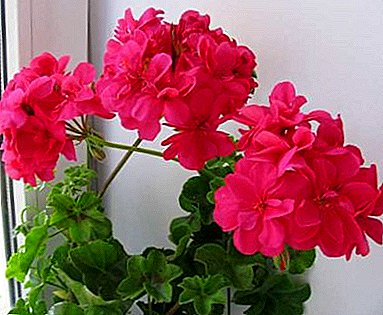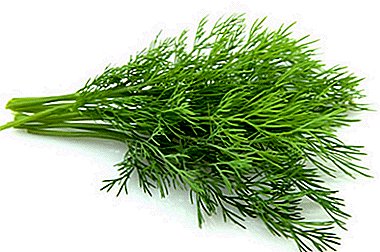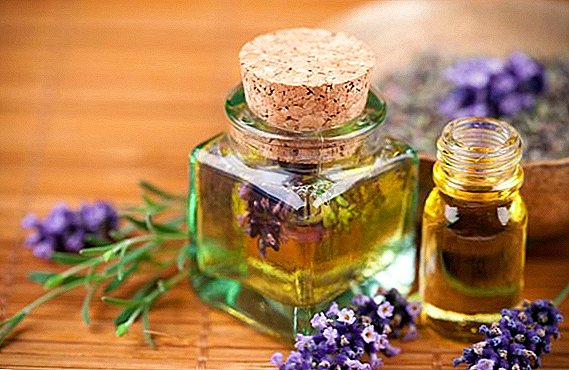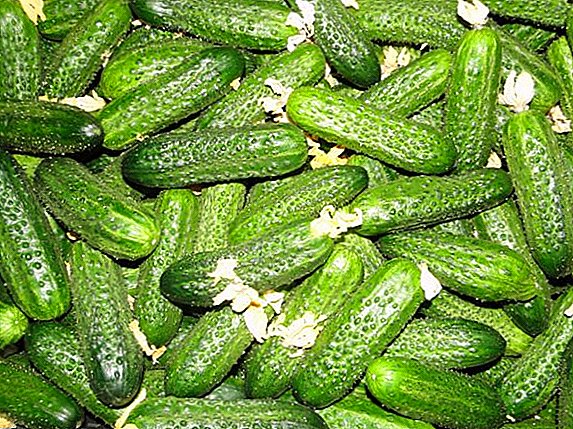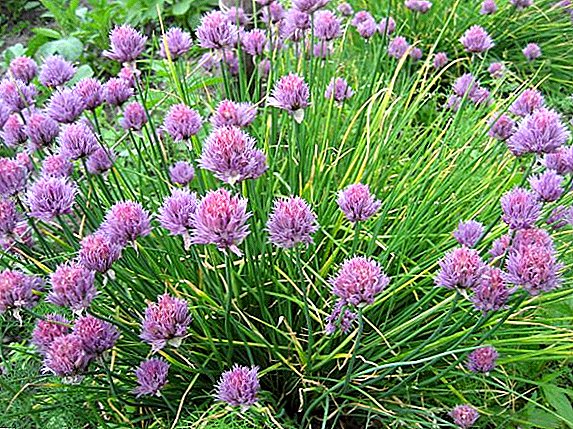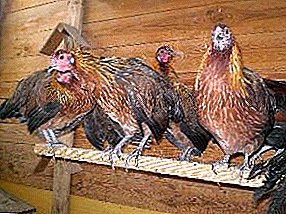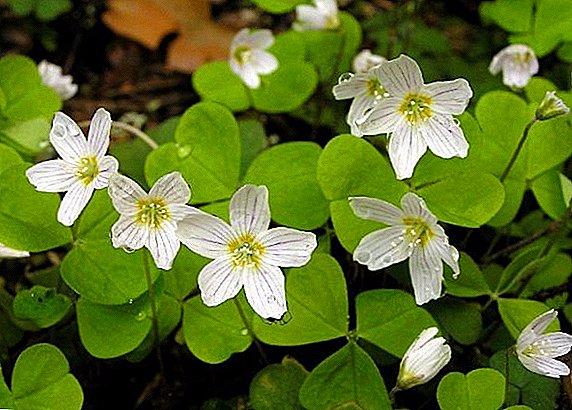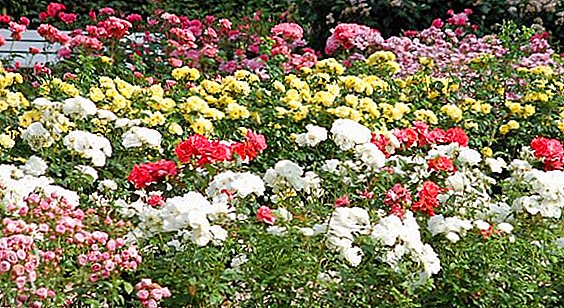 Often, gardeners have a desire to grow some new sort of roses on their plot, or to multiply existing bushes in order to create a more spacious decoration of the territory adjacent to the house. The most popular option to achieve this goal is grafting, which provides for the cultivation of flowers from a small segment of the mother bush.
Often, gardeners have a desire to grow some new sort of roses on their plot, or to multiply existing bushes in order to create a more spacious decoration of the territory adjacent to the house. The most popular option to achieve this goal is grafting, which provides for the cultivation of flowers from a small segment of the mother bush.
The cuttings can be performed both in spring and in summer or in autumn, however, many growers prefer the latter option. Let's take a closer look at the possibility of planting roses in the fall.
Suitable varieties
To begin with, not all modern varieties can be used for grafting, which means that before taking up the reproduction of their plants in this way, you should make sure that this method is appropriate.
Thus, the ideal candidates for cuttings are ground cover and miniature varieties, as well as polyanthous and climbing varieties of roses, in which there are small flowers. When using Floribunda rose cuttings, you can only rely on the fifty percent chance of rooting for such planting material.
It is not easy to propagate in this way and climbing plants with large flowers, as well as park and hybrid tea varieties. The percentage of rooted cuttings in this case will be minimal. 
When to start? Best time
Before growing roses from cuttings, it is important to choose the most suitable time for the procedure. In order for a seedling to be able to form and root normally, the cutting must be fully ripe, which means that it must be cut off before the petals are completely dropped from the inflorescence, but not before a full-blown bud is formed.
At other times, cutting wood will be underdeveloped and not suitable for rooting. If we talk in numbers, then the most suitable moment for the procurement of such planting material will be the interval from September 15 to September 25.
Important! Choose annual shoots so that at least four buds are turned out at each segment (above the top you need to make a straight cut, and above the bottom - a scythe). If the leaves have not yet fallen, then they can be cut a little.Many flower growers give preference to the autumn saping of the rose, since it is much easier to root such planting material in the autumn time.
 It is easy to explain this phenomenon: in preparation for the winter season, the rosebush tries to accumulate nutrients as much as possible, especially since by cutting off the shoots, you will have the opportunity to choose the most suitable planting material.
It is easy to explain this phenomenon: in preparation for the winter season, the rosebush tries to accumulate nutrients as much as possible, especially since by cutting off the shoots, you will have the opportunity to choose the most suitable planting material.Cutting roses in the fall is a relatively simple process, but it is necessary to know not only the nuances of the procedure, but also the rules for further care of the cuttings received at home, which we will discuss later.
To the extent possible the grafting of Double Delight, Pierre de Ronsard, Sophia Loren, Falstaff, Pink Intuition, Blue Perfume, William Shakespeare, Graham Thomas, Mary Rose, Abraham Derby, Chopin, New Dawn, see the characteristics of the variety.
Procurement of cuttings
Having decided on the grafting period and choosing the most suitable specimen for this purpose, it remains only to figure out how to cut the cuttings correctly so that the decision to propagate roses in the fall brought the most effective results in the spring (up to this point all the cut parts can be preserved without rooting).  Such a process is simple and involves the following actions:
Such a process is simple and involves the following actions:
- select the most viable and well-formed stem and, stepping back from the upper bud 1.5 mm, make an incision (the lower section is made slightly at an angle);
- on the finished segment, remove all the leaves and thorns that are near the lower cut, and in the upper part shorten the leaves by 1/3;
- process the upper part (on the cut) with a solution of potassium permanganate or simply dip it into melted warm wax;
- before rooting the cutting, place it in water for 24 hours, after adding to it the means for accelerating rooting.
Did you know? With regular inhalation of the scent of roses, a person becomes more calm and friendly, so flower bouquets are recommended to be placed in the house in a bad mood and irritability.
How to keep cuttings until spring
Cutting cuttings in early November, they do not necessarily immediately rooted in a standard way. They can calmly wait for a more favorable time, having spent the winter in your shed or on the balcony. To do this, they need only prikopat in the sand or other substrate.  For apartment dwellers, the best option would be: At the bottom of the prepared plastic bucket, pour a six-meter layer of expanded clay (poured to the bottom), and then add to it the main layer of soil mixed with perlite and vermiculite. As an alternative, you can mix the soil with sand or purchase a special “rose” substrate.
For apartment dwellers, the best option would be: At the bottom of the prepared plastic bucket, pour a six-meter layer of expanded clay (poured to the bottom), and then add to it the main layer of soil mixed with perlite and vermiculite. As an alternative, you can mix the soil with sand or purchase a special “rose” substrate.
Perlite is able to hold a liquid, the volume of which is five times the weight of its own weight, which means that only 20% of the substance is enough for you. After making small grooves in the prepared substrate, place bundles with cuttings in them in the lower side and lightly sprinkle them. The top can be sealed with warm paraffin, but this is optional.
The cuttings of various plants have their own nuances, which should be taken into account when preparing to propagate currants, blue spruce, plum, laurel, grapes.From above the bucket must be covered with a plastic bag (preferably transparent) and tied with a rope to the bucket. Capacity itself is wrapped with blankets or other warm clothes. On sunny and nice days, cellophane can be slightly cut and allowed to "breathe" the cuttings, while sprinkling them with water.
Another good option that will not take away a lot of effort for preparation is use to store cuttings of the refrigerator. In this case, the collected planting material is placed in a leaky bag and sent to storage in the door of the refrigerator. About once a week they need to get and spray out of the spray. You can store slices of roses in this way for about three months at a temperature of no more than + 1 ... +3 ° C.  As an option you can put all the cuttings in a cardboard box and just pour peat over it, then choose the darkest corner in the dacha (in such a place the snow will lie the longest without puddles) and place a box there, covered with snow from above.
As an option you can put all the cuttings in a cardboard box and just pour peat over it, then choose the darkest corner in the dacha (in such a place the snow will lie the longest without puddles) and place a box there, covered with snow from above.
As a result, you will get a small snowdrift, and so that it does not melt quickly, you can cover it with pine or fir branches. Again seal the package (it will be possible with the help of pegs), waiting until the liquid has completely evaporated.
Important! In especially cold weather (up to -25 ... -30 ° C) it is desirable to surround the bucket with something warm or temporarily deposit it in a warmer room.
Rooting process
The rooting of the cuttings can take place in one of two possible scenarios: in the first case, you are waiting for the formation of new roots, planting the segments in the pots, and in the second case, plant them immediately in the open soil, where they will remain or later will be transplanted to another site . 
Indoor
Before placing in a closed soil, that is, in separate containers (or one tank), it is important to leave planting material for 24 hours in water and pre-treat with potassium permanganate solution.
Then a drainage layer is poured on the bottom (usual small pebbles can be used), and on top there is a special substrate or soddy soil in which further development of the root system of the cutting will take place. The final layer should be fine and well washed river sand, poured with a thickness of 3 cm.
When you deepen the stalk in the sand, try to prevent it from reaching the sod layer, and when planting several segments at once, be sure to leave a distance of 8 cm between them or rooting them separately.
All planted cuttings need to sprinkle with water, and then cover each with a plastic bottle with a cropped neck or a regular package. Pots with seedlings are placed in a warm, but not very hot place, where the sun's rays do not fall. The temperature in the room should be kept within + 20 ... +22 ° C, and in order to maintain the humidity at a consistently high level, it is enough to periodically raise the bottles and spray the seedlings.
Did you know? Oil extracted from roses is one of the most expensive in the world and is valued even more than gold. To obtain one kilogram of such a substance will have to use 3 tons of petals.
In the open ground
If you cannot afford to root the cuttings in separate containers and under household supervision, then you can put them immediately in open ground, in a place called "cuttings." This is an open garden, above which a shelter is erected, protecting the plants from the winter cold.
With the advent of spring, the shelter is dismantled and the growing of bushes is performed in natural conditions. Rooted plants can be transplanted to a permanent place of growth already next autumn.
Cuttings are placed in such places a little tilted, immediately covering the plastic or glass jar. As for the soil in the selected place, it should be fertilized in advance with potash nitrate (20 g is enough), peat, sand, superphosphate (30 g), wood ash (200 g) and urea (20 g).
Inoculation is often used as a method of breeding roses of different varieties.
Having mixed all these components, they are poured into a small bed and after loosening the cutting is placed. If you do not want to cover each of them with a separate container, you can use polyethylene.
Despite the fact that in the first year of life, the cuttings can not be transplanted to a new place, they need to ensure normal care, providing for timely watering and loosening. With this version of the breeding of roses, cuttings of them can be and not transplanted to another site, leaving in the ground for more than one autumn.
Planting cuttings
If you make rooting cuttings in closed soil, then after two weeks you will be able to see the first roots, and after 14 days they will already root very well in the ground. After a month, the escape is placed in a dark room, where it is located until the very spring. From the grower is required only timely watering and loosening, but these procedures do not necessarily perform daily.
With the arrival of spring, as soon as the ground warms up well, rooted cuttings are planted in a mixture of leaf and sod soil, to which large river sand is added (sometimes it is better to mix it with peat in a 50:50 proportion), vermiculite or perlite (proportional ratio is 2: 1 : 2: 0.5).
Important! The surface of the prepared substrate will be filled with a three-centimeter layer of sand, which will not allow the water to stagnate.It is recommended that the finished mixture is first spilled with a solution of potassium permanganate, and then make holes (slightly larger than the diameter of the root system of the cutting) and place planting material in them, filling the roots with soil on top.
 After the process is over, pour the cuttings abundantly (about 1 bucket per each well) and after a few days, soil the seedlings around the seedlings. In the autumn planting is only one-time watering.
After the process is over, pour the cuttings abundantly (about 1 bucket per each well) and after a few days, soil the seedlings around the seedlings. In the autumn planting is only one-time watering.Features wintering roses
The optimal conditions for storing the cut cuttings during the winter period will be a cellar or basement with good ventilation and temperature indices of + 1 ... +3 ° C and humidity of 65-70%.
If in your region winter is not characterized by constancy and thaws are possible, make sure that there are no cracks on the roses through which pathogens can easily get to the plant.
To prevent problems, you need to properly build a shelter using any available material (dry leaves, peat and shavings), and in order not to be blown away by the wind, you can put spruce fir branches on top.
Of course, the shelter will be needed only for those roses whose cultivation from cuttings in the open ground takes place in the autumn and which will remain on the street for the winter.
In general, cutting roses is not difficult. The main thing - the correct selection of varieties, compliance with the necessary conditions and attention to detail.


